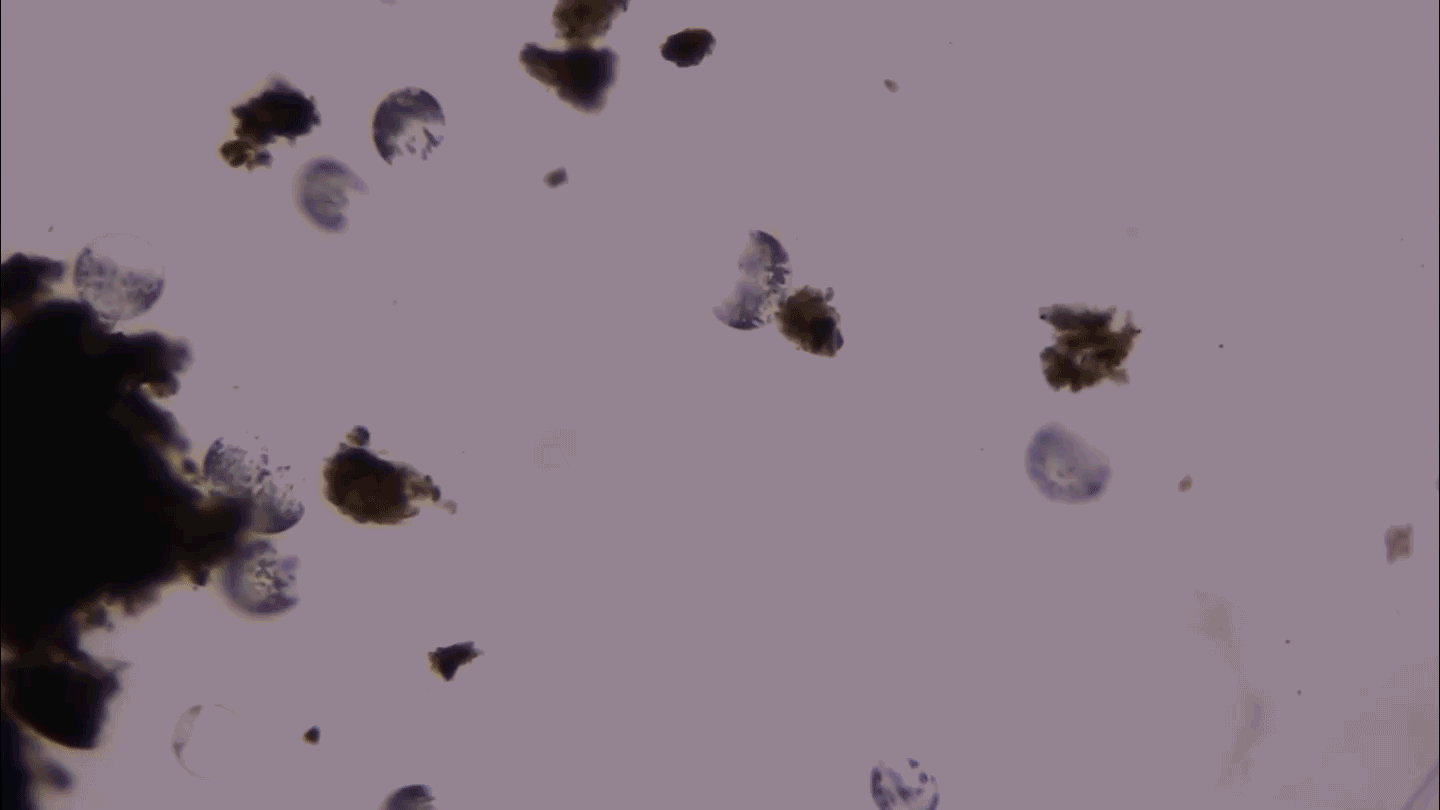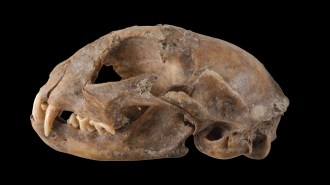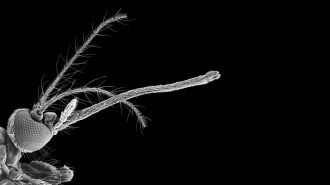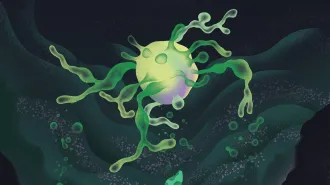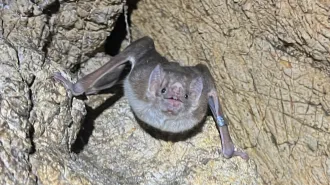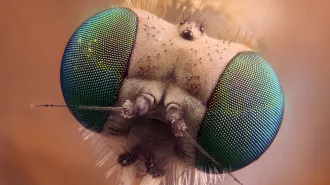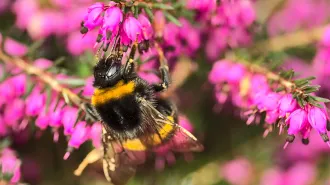Remote seamounts in the southeast Pacific may be home to 20 new species
The intersection of the Nazca and Salas y Gómez Ridges is a deep-sea biodiversity hot spot

A Chrysogorgia (golden coral) encountered by a robot diving along an unnamed Nazca Ridge seamount harbors other deep-sea species, including a Calliaster seastar and Lyrocteis ctenophore (yellow, gelatinous animals with trailing tentacles). Squat lobsters (Uroptychus sp.) may be a species new to science.
ROV SuBastian / Schmidt Ocean Institute
Some 1,400 kilometers off the coast of Chile, rare deep-sea creatures drift along a garden of sponges and corals that grow along the flanks of a 3,100-meter-tall undersea mountain.
A monthlong survey of mountain ecosystems in the remote seas of the southeastern Pacific Ocean has not only turned up a never-before-seen seamount but also revealed many species of sea life possibly new to science. Eighty species were observed in this part of the ocean for the first time, the Schmidt Ocean Institute in Palo Alto, Calif., announced August 28 in a news release.
The seamount discovery was a surprise, says oceanographer Jyotika Virmani, executive director of the institute. Satellite imaging of the area had shown only a low-resolution bump on the seafloor. The mammoth seamount is thousands of meters high, with a summit that sits 994 meters below the ocean surface.
Using a diving robot to film and explore the new seamount plus nine others, expedition researchers found a teeming ecosystem, including a garden of sponges and ancient corals about twice the breadth of a basketball court. The garden isn’t as dense as shallow water reefs, Virmani says, which are “absolutely chockablock with corals,” but still impressive for such a deep water reef (SN: 10/26/23).
-

This “Casper octopus” was filmed by the team at a depth of about 4,400 meters and is the first record of the rare cephalopod in the Southern Pacific. The species — discovered in 2016 — has never been collected and has not been formally described or named by scientists. Schmidt Ocean Institute (CC BY-NC-SA 4.0) -
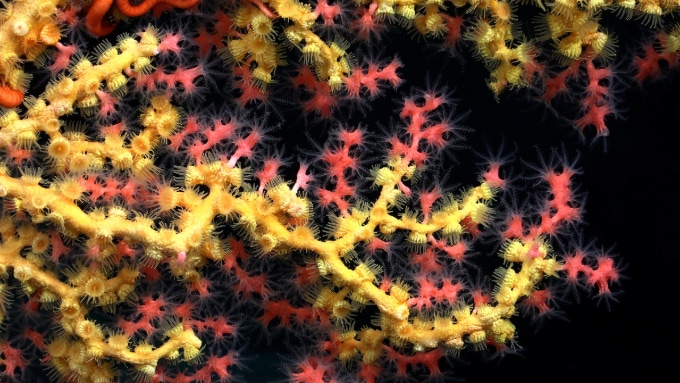
A bubblegum coral (Paragorgia, red) is covered with Midas touch (a type of zoanthid, yellow). It was observed by the research team on seamount T08 along the Nazca Ridge off the coast of Chile. Schmidt Ocean Institute (CC BY-NC-SA 4.0) -
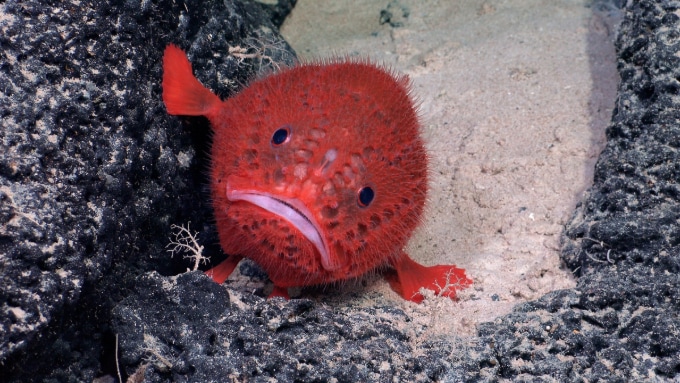
A sea toad (Chaunacops coloratus) uses its pectoral fins to brace itself against rock and sand 1,430 meters down on a newly discovered and mapped Nazca Ridge seamount known to researchers as KW-14176. Schmidt Ocean Institute (CC BY-NC-SA 4.0) -
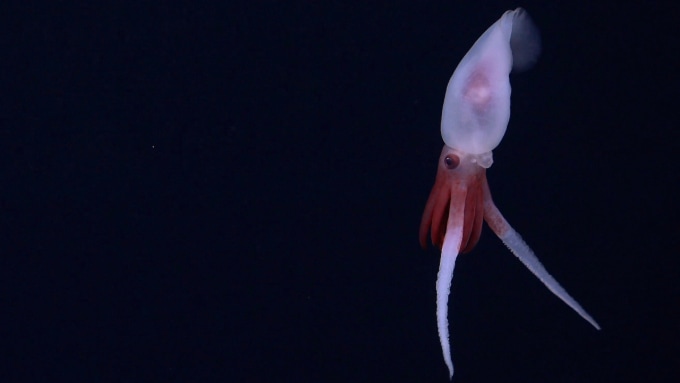
This image comes from the first footage of a live Promachoteuthis squid, collected by the research team. Until now, Promachoteuthis has been known only from dead individuals found in nets. Schmidt Ocean Institute (CC BY-NC-SA 4.0) -
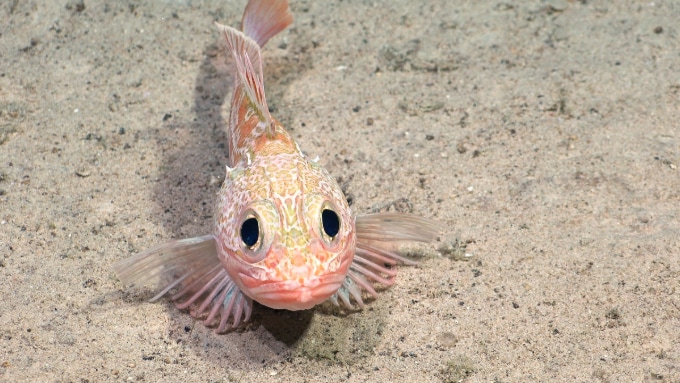
This scorpionfish (Helicolenus lengerichi) was encountered while the research team was surveying an unnamed and unexplored seamount known to the researchers as T06. Schmidt Ocean Institute (CC BY-NC-SA 4.0) -
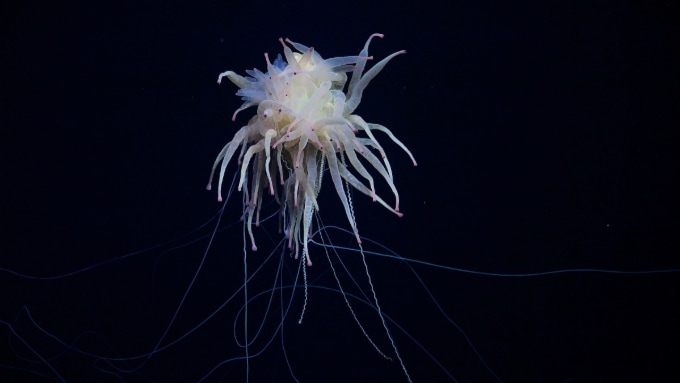
The scientists encountered a flying spaghetti monster (Bathyphysa conifera) while exploring the seamounts. This rarely seen creature is a siphonophore, and is actually a colony of related, gelatinous individuals, similar to a Portuguese man o’ war. Schmidt Ocean Institute (CC BY-NC-SA 4.0)
The robot encountered the ghostly white Casper octopus, named for its uncanny resemblance to the cartoon specter Casper the Friendly Ghost. The species has yet to be formally described by scientists, and until now was known only from the North Pacific.
The team also gathered the first-ever footage of a living Promachoteuthis squid. “It’s been brought up in nets,” Virmani says. “But they’ve never been living samples.”
Twenty of the encountered animal species may be new to science and found only on the summits of their home seamounts, adding to 150 possible new species from two previous expeditions. The animals include sea anemones, urchins, shrimp and a squat lobster. The team also found a fossil that may be from a new species of ancient whale, Virmani says, but this has yet to be confirmed.
“[The findings] show this part of the world is very poorly explored at the moment, but it does hold a lot of interesting wildlife.”

